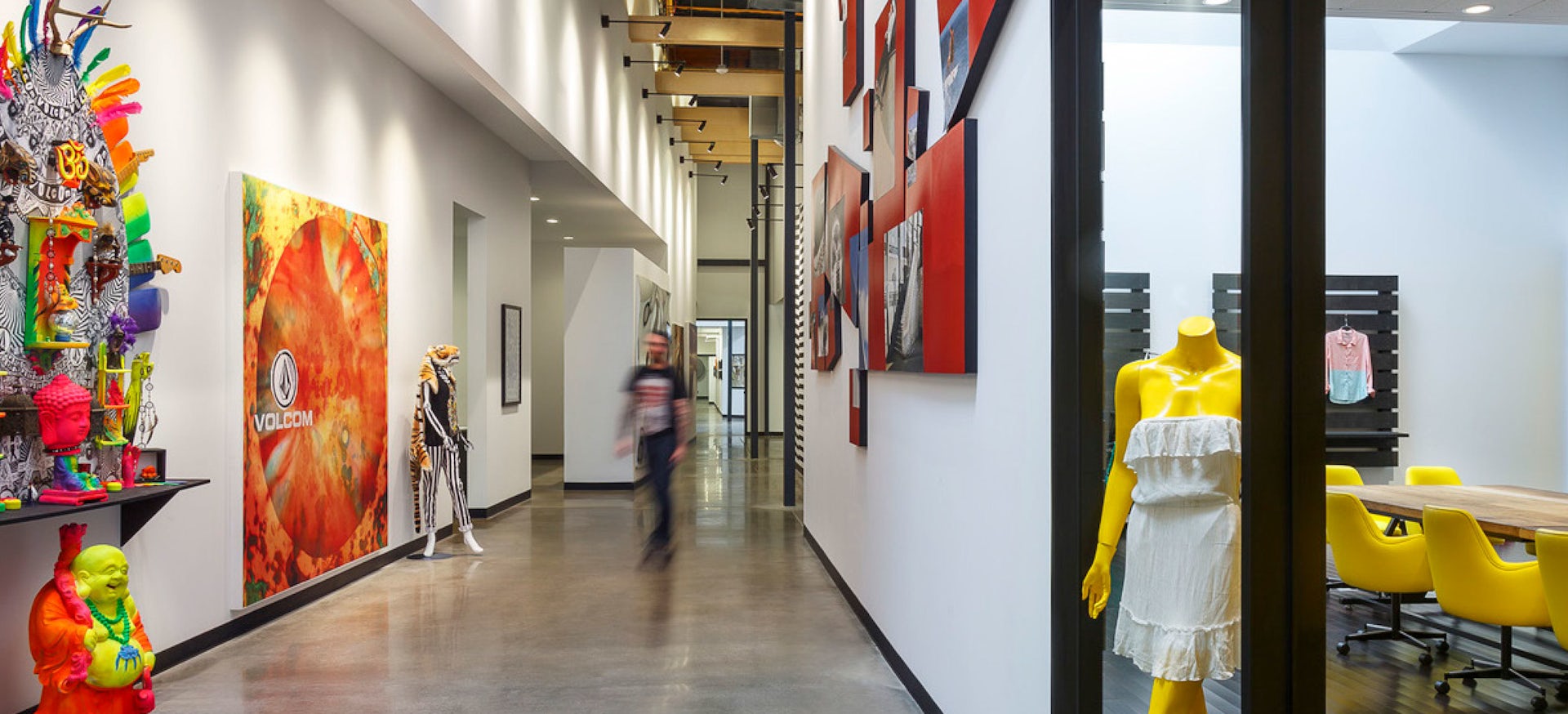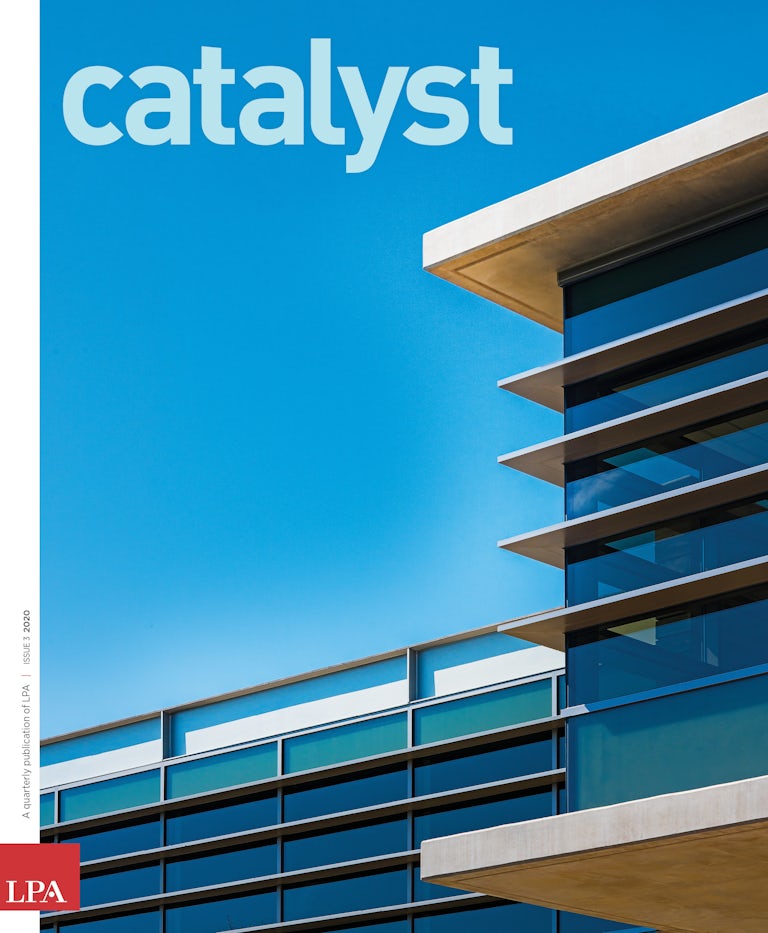The pandemic sparked a flurry of fancy “future of workplace” renderings, tips for workstation arrangements and lengthy discourse about the new “hybrid” office. Most of the material, complete with gray circles around desks and diagrams of hand-sanitizer stations, will offer little help to businesses preparing for their future.
In recent months, LPA designers have been working with companies in a wide variety of sectors, exploring how the workplace might operate when a large percentage of staff is based at home. With more unknowns than knowns, the discussions often veered toward opportunities and the chance to rethink fundamental aspects of the workplace.
For most companies, the workplace can take on new roles, says LPA Design Director Rick D’Amato.
“The workplace is a representation of who and what our organizations are,” D’Amato says. “It’s not so much about the work; it’s about how we come together and how we express who we are.”
There is no doubt that some sort of hybrid combination of remote and place-based work will be the reality for most companies, at least for the foreseeable future. That will mean very different things for different companies. Research and a clear understanding of all of the factors affecting a company and its staff should dictate decisions.
As LPA designers work with clients, recurring themes are emerging, strategies to create a new kind of workplace and turn empty space into an asset.
THE PORTAL
It starts with a fundamental shift in how you view the workplace. Instead of a place to house employees, the workplace should be an extension of the brand and the culture. “The workplace is more than a connection to the people that we work with on a daily basis,” D’Amato says. “Our workplaces are really a connection to our entire organization.” (For more on the portal concept, see: “A Better Normal,” Page 7)
The workplace can serve as a portal, a permeable space linking staff and clients. No longer defined by four walls, the workplace can express the brand by engendering engagement and empowerment. LPA’s workplace design for consumer products company MerchSource serves as a showcase for the individual brands, providing flexible work and social spaces that reflect the company’s creative energy.
For Celestica, a multinational technology manufacturing company, the centerpiece of its Silicon Valley presence is an immersive, 7,300-square-foot customer experience center, which serves as a virtual gallery to support their customer engagement philosophy.
In the past, the design process often started with generating the highest possible density of workstations and then using the leftover space for conference rooms. Now that can be reversed. Planning can start with creating the most value for the space, recognizing the company’s goals and the varied ways people will work in post-pandemic times.
Empty space and a less dense workplace can be used to build something new. For a real estate company, LPA developed plans to rework the traditional workspace with large conference areas, a fitness component and bifold doors, which would open the space to the outdoors. Workstations were also reoriented in the design and live-streaming technology added to connect separate offices.
In the post-COVID world, collaboration and teamwork still matter. “The idea of being able to gather people together, whether it’s through technology or in person, is important for the health of a company,” says LPA Director of Workplace Terri Lee. “Those open collaboration areas still are key to how you get people together.”
What Does the Hybrid Office Mean for You?
The workplace is more than a place to house workers. It can serve as a portal to your brand and culture.

IT'S ALL ABOUT CHOICE
People have learned that they like the flexibility of working from home. They have been empowered by the remote working experience and want to maintain agency over their environment, schedule, work-life balance and workspace.
Employees need the freedom to decide what works best for them. Studies show that happier employees are more productive and more loyal. Flexibility and options play a key role. The workplace should make employees feel valued and part of the company’s success.
“This is the perfect time to take a step back and understand what makes people happy,” D’Amato says.
At the same time, it’s important to recognize that a single approach won’t address the diversity in the workplace, especially among younger employees. Studies have shown that millennials and other younger workers prefer the security and connections found in the office, says LPA Dallas Managing Director Teresa Rodriguez. “As Generation Z employees start their families, their expectations will shift,” Rodriguez says. “They have come to expect workplace policies that benefit families and prioritize childcare.”
DESIGN TO INSPIRE
Whether it’s virtual or physical, the workplace should support our best selves. Post-pandemic, the workplace still should be designed to cultivate the types of experiences that develop employees’ skills and help them progress in their professional and personal journey. As a portal, it should serve as their access point to a healthier, more fulfilling lifestyle.
Office design is “not just about attracting and retaining talent anymore,” says LPA San Jose Studio Director Patrick McClintock. “It’s far more about the growth of people and their abilities.” The workplace should bring together the values of staff and company, creating an environment that makes all employees feel part of something bigger than themselves, McClintock says.















